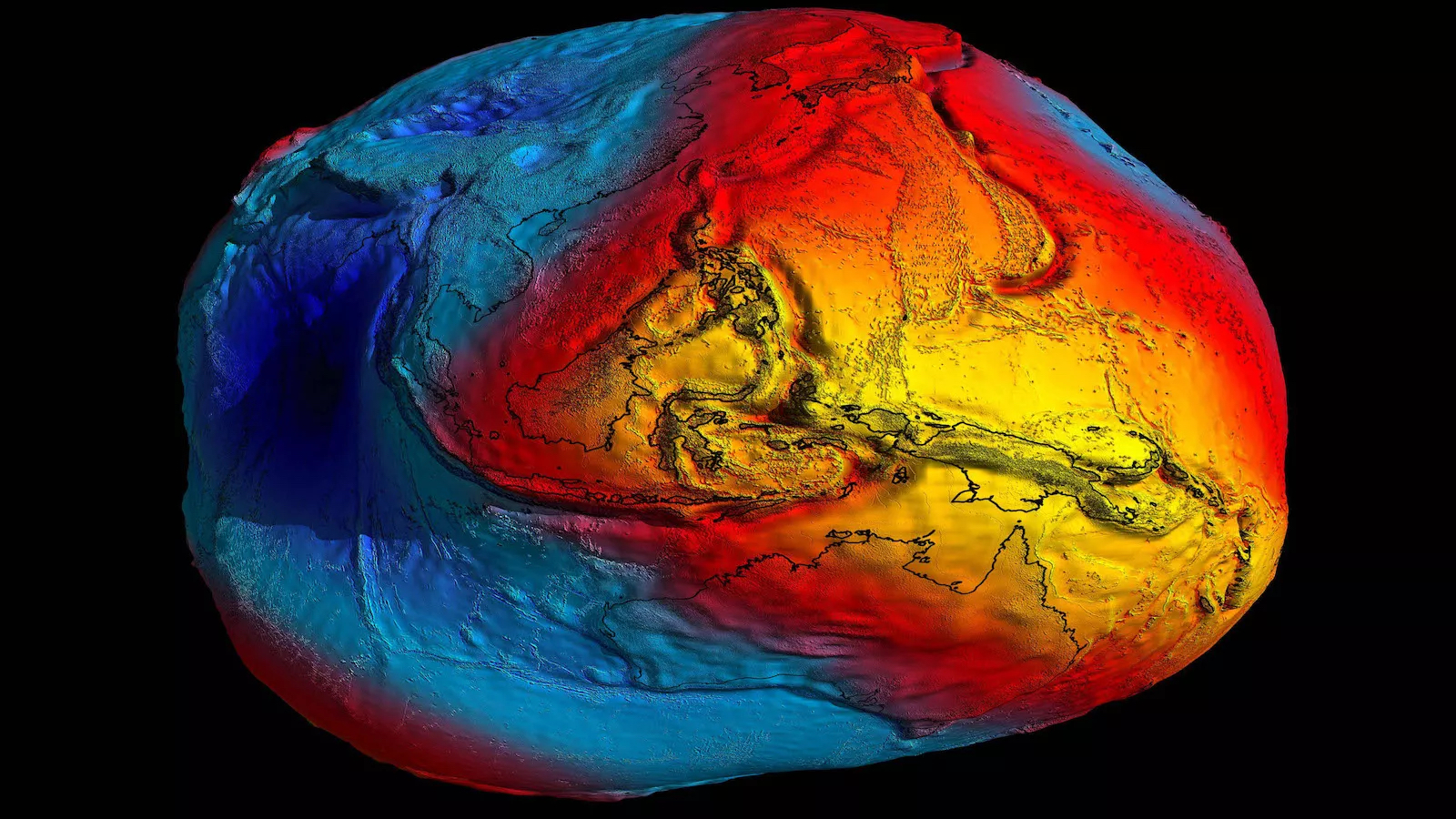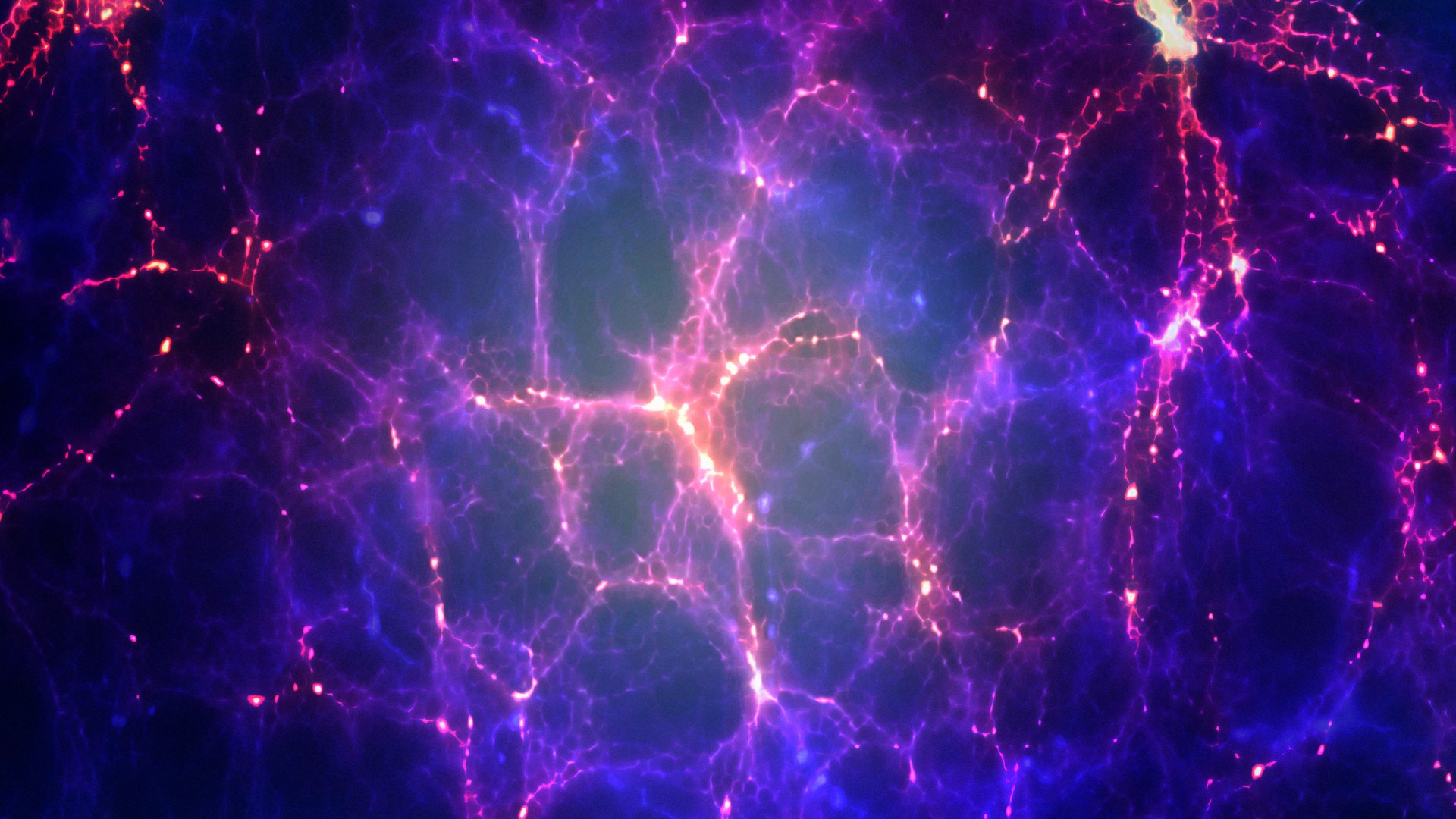Indian Ocean gravity hole was caused by extinct ancient sea, scientists say
Scientists have puzzled over the origins of a gravity hole in the Indian Ocean for years. Now, researchers think the sunken floor of an extinct ocean could be the cause.

Scientists may have finally identified the origins of a deep "gravity hole" in the Indian Ocean — a mysterious region where Earth's gravitational pull is weaker than at other parts of our planet.
The Indian Ocean geoid low (IOGL) is a 1.2 million-square-mile (3 million square kilometers) depression found 746 miles (1,200 kilometers) southwest of India. Compared with its surroundings, the low's gravity is so weak that a layer of its water has been snatched away — making the sea level over the hole 348 feet (106 meters) lower than the global average.
The low is a consequence of our surprisingly squidgy planet, which flattens at the poles, bulges at the equator and undulates between lumps and bumps across its surface. But ever since its discovery in 1948, the origin of this Indian Ocean abyss has puzzled scientists.
Related: Earth's layers: Exploring our planet inside and out
Now, a study published May 5 in the journal Geophysical Research Letters suggests the IOGL was caused by low-density magma that was pushed into the Indian Ocean by the sinking slabs of an ancient ocean.
"The origin of this geoid low has been enigmatic. Different theories were put forward to explain this negative geoid anomaly," the researchers wrote in their study. Yet "all these studies looked at the present-day anomaly and were not concerned with how this geoid low came into existence."
To search for a potential answer, the researchers used 19 computer models that simulated the motions of the mantle and tectonic plates in the region across 140 million years. They then compared the simulated lows that formed in each test with the real-life hollow.
Get the Space.com Newsletter
Breaking space news, the latest updates on rocket launches, skywatching events and more!
The six models that best simulated the real geoid low shared one common feature: Plumes of hot, low-density magma that rose up to displace the higher-density material beneath the low, reducing the region's mass and weakening its gravity.
These plumes are spurts of mantle rock originating from a disturbance 600 miles (1,000 km) west under Africa. Known as the "African blob," the dense bubble of crystalized material inside Africa's mantle is the size of a continent and 100 times taller than Mount Everest.
But what could have pushed chunks of this material under the Indian Ocean? The final pieces of the tectonic puzzle are "Tethyan slabs," or remnants of seafloor from the ancient ocean of Tethys, which existed between the supercontinents Laurasia and Gondwana more than 200 million years ago.
The researchers suggest that after the Indian plate broke off from Gondwana to collide with the Eurasian plate, it passed over the Tethys plate, subducting it — pushing it under the Indian plate. As it was shoved into the mantle near modern-day East Africa, the shattered pieces of the ancient Tethys Ocean began to slowly sink deeper into the lower mantle. Eventually, around 20 million years ago, the sinking Tethyan plates displaced some of the African blob's trapped magma to form the plumes.
"These plumes, along with the mantle structure in the vicinity of the geoid low, are responsible for the formation of this negative geoid anomaly," the researchers wrote.
To confirm the researchers' predictions, scientists will now need to uncover the existence of the plumes using earthquake data collected from around the geoid low. Whether the plumes are the real answer, or if even deeper forces are at play, remains to be seen.
Join our Space Forums to keep talking space on the latest missions, night sky and more! And if you have a news tip, correction or comment, let us know at: community@space.com.

Ben Turner is a U.K. based staff writer at Live Science. He covers physics and astronomy, among other topics like weird animals and climate change. He graduated from University College London with a degree in particle physics before training as a journalist. When he's not writing, Ben enjoys reading literature, playing the guitar and embarrassing himself with chess.

